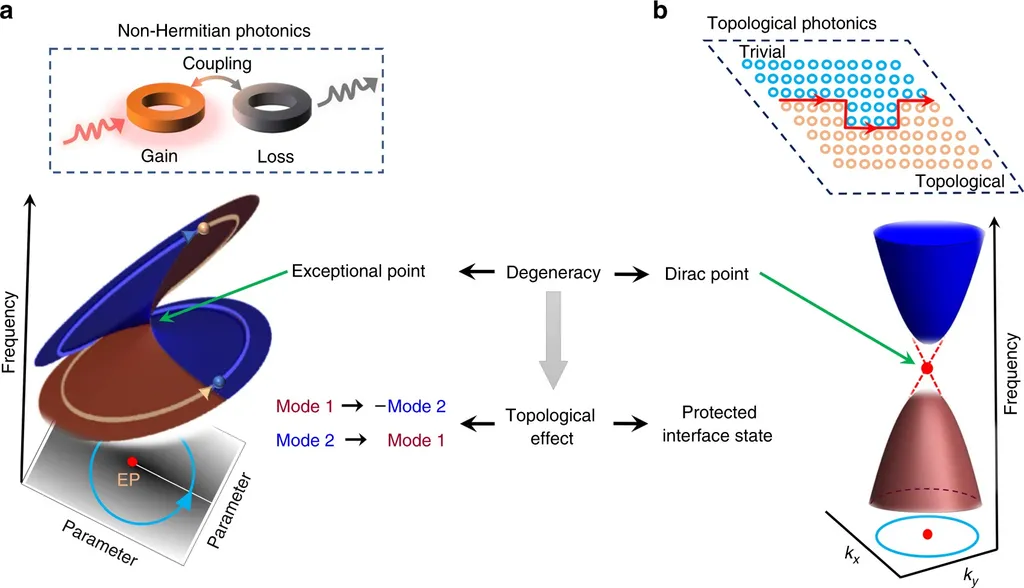In the realm of energy research, understanding and controlling the flow of charge is crucial for developing efficient energy storage and transfer systems. A recent study by Dharana Joshi and Tanay Nag from the Indian Institute of Science Education and Research, Berhampur, delves into the intriguing world of non-Hermitian topological phases and their potential applications in adiabatic charge transport. Their work, published in the journal Physical Review B, explores the nuances of non-reciprocal intracell hopping and its implications for energy systems.
The researchers focus on an extended Su-Schrieffer-Heeger model, which includes second-nearest-neighbor hopping. This model is used to analyze the phase boundaries using non-Bloch momentum. The study reveals that the off-critical phases are associated with gapped non-Bloch bands, while critical phases are linked to gapless bands. The non-Bloch momentum is shown to accurately reflect the bulk boundary correspondence (BBC), explaining the winding number profile under open boundary conditions.
One of the key findings of this research is the concept of adiabatic charge transport in a non-Hermitian scenario. The study demonstrates that when non-Bloch bands do not experience gap-closing during the evolution of time, a quantized flow of charge is preserved. This finding has significant implications for the energy sector, particularly in the development of topological insulators and other materials that can efficiently transport charge with minimal energy loss.
The researchers also examine the spatio-temporal Bott index and non-Bloch Chern number, further justifying the BBC. The study systematically unifies the concept of non-Bloch bands for both static and driven situations, providing a comprehensive framework for understanding and manipulating charge transport in non-Hermitian systems.
In practical terms, this research could lead to the development of more efficient energy storage devices, such as batteries and supercapacitors, as well as improved power transmission lines. By understanding and controlling the flow of charge in non-Hermitian systems, researchers can potentially reduce energy losses and improve the overall efficiency of energy systems. The findings also open up new avenues for exploring topological phases in driven and dissipative systems, which could have applications in quantum computing and other advanced technologies.
Source: Physical Review B
This article is based on research available at arXiv.

